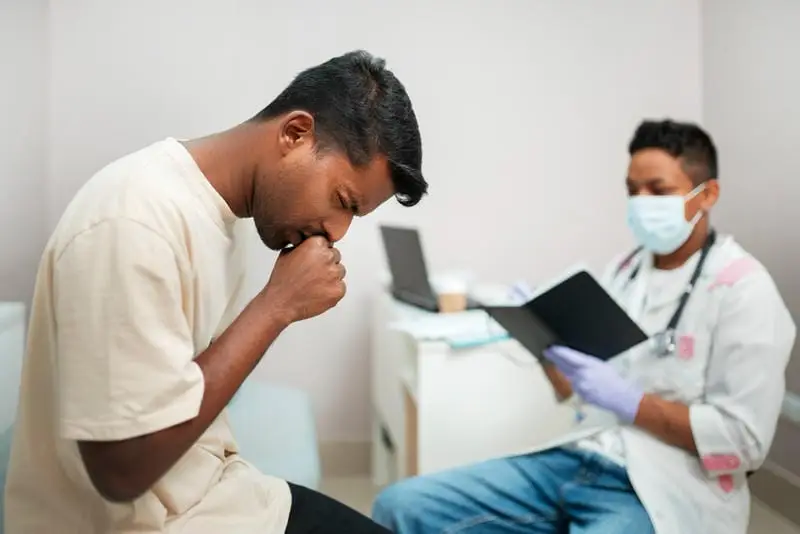- Published on: Nov 05, 2021
- 3 minute read
- By: Second Medic Expert
Remission Of Cancer!
Remission of cancer!
Cancers under remission can return at any time. This does not mean that any more treatment is needed, simply that the patient needs to continue with normal cancer prevention measures such as check-ups and screenings. Cancer cells almost always linger on by replicating just a little more than healthy cells and they do so without causing symptoms for some time usually causing no harm and occasionally doing good by consuming some other kind of damaged cell. The problem is when they suddenly multiply into a big enough population to really cause trouble which happens largely because something changed in their environment--the toxins didn't change but the tissue became less able to handle them or somehow the cancer cell got its growth signals restored or something like that.
Remission of cancer (or more accurately, the term 'complete remission') is typically interpreted as the situation where there are no detectable traces of cancer left in the patient's body through means such as X-Rays or CT Scans. Other medical definitions of remission include keeping levels of tumor markers down enough to draw a conclusion.
Whether or not remission is attributable to treatment can be disputed but what happens after it takes place does not seem like a coincidence - post-remitters experience less cardiovascular disease and Alzheimer's than those who never experienced remission.
This usually happens if the cancer is in remission. The word "remission" means to stop talking, so it's a way of saying that cancer has stopped progressing and not spread to other parts of the body. This is often temporary and doesn't mean that the patient has been cured or will never get sick again. If anything, else happens, such as a recurrence of their cancer, they'll probably need treatment again to cure it for good.
The condition of being cancer-free is called remission. To say someone has been cured of cancer, a doctor wants to see a period of five years with no signs or symptoms, so they’ve done some follow-up testing and the signs are negative. Their body just isn’t producing any cells that have those abnormal changes characteristic of cancer, which is what it means for someone to be cured of cancer. This can occur because of conventional or alternative therapies as well as natural treatments such as diet and lifestyle changes.
Remission is after an interval (parents), during which there were detectable but not distressing symptoms (or no symptoms) attributable to the disease; the near-complete disappearance (paling).
It might take years but you can repair your intestinal tract and get it working normally again. One of the main systemic effects of intestinal healing is improved immunity, so consider that when choosing foods.
A remission is a temporary stopping of the growth or spreading of cancer. The term "remission" only applies to certain cancers and may not apply depending on what type of cancer it is, especially since there are multiple types and classification systems for different types and stages of cancers. For instance, lymphoma can be in remission because it has stopped growing or spreading but if it starts back up again it would not be considered to have been in remission. It's possible for someone with metastatic prostate cancer to experience a remission from their disease, which does not mean that they are cured since they will probably need additional treatments. In other words, there is still no cure-all treatment available that works on all cancers.
There are three possible outcomes of any cancer diagnosis. The first is a cure, which would be that the cancer is cleared completely, meaning it can't be detected at all. Secondly, there is remission (promotion), which means that cancer shrinks down but isn't gone yet; this may last weeks or months. Lastly, there's extension-the cancer continues to grow and spread without slowing down; this one does not have a good prognosis for survival rates.
For most cancers, a remission is an option if it's caught early enough before too many cells have divided and started to cause trouble somewhere else in the body.
At this time, there is no cure for cancer. Some doctors advocate that "remission" of cancer lasts until the disease recurs, after which point it becomes metastatic (meaning that it has spread to other parts of the body). What this means in practical terms is that metastatic cancers are unlikely to be cured by any treatment. There are some exceptions including events where the patient's immune system has eradicated all traces of their tumor -- called spontaneous remission. It is difficult to tell if a tumor will relapse once it has gone into remission since much can change in one's life or health between diagnosis and relapse.
In 2013, studies have shown that removal of 85% or more of stomach cancer cells led to a 10% reduction in the risk of relapse. In other words, as long as ample amounts of stomach cancer cells are removed at surgery, there is a statistically significant chance that remission will be achieved.









